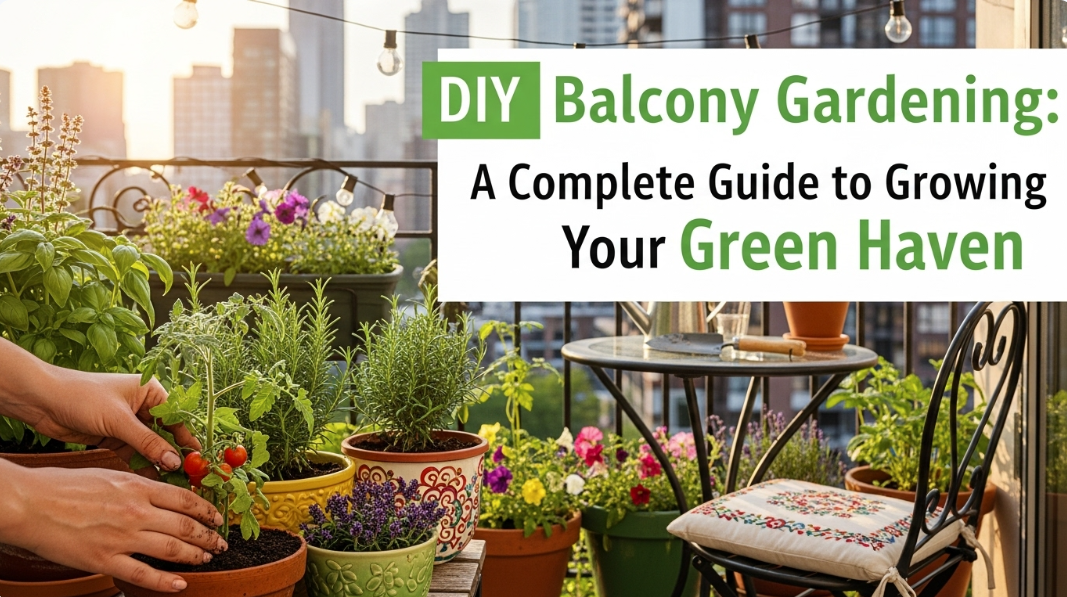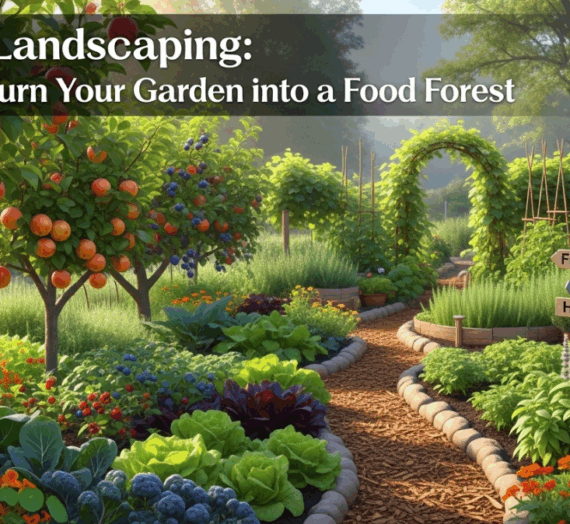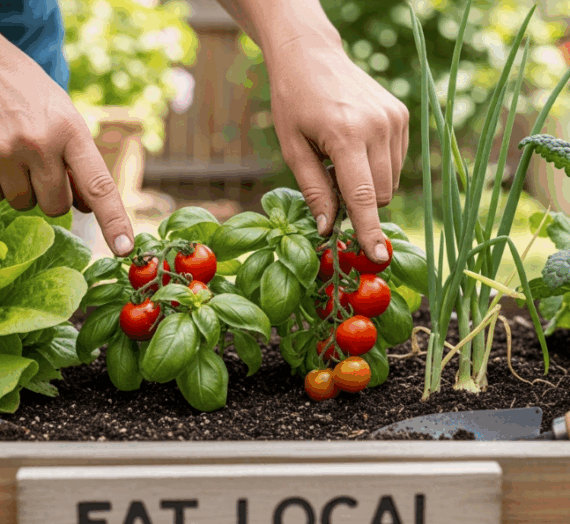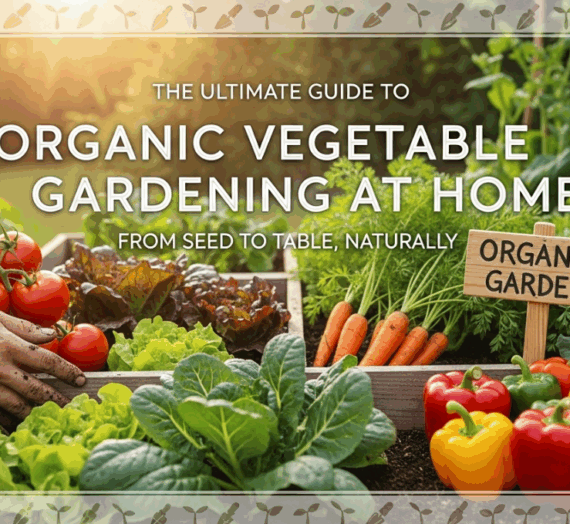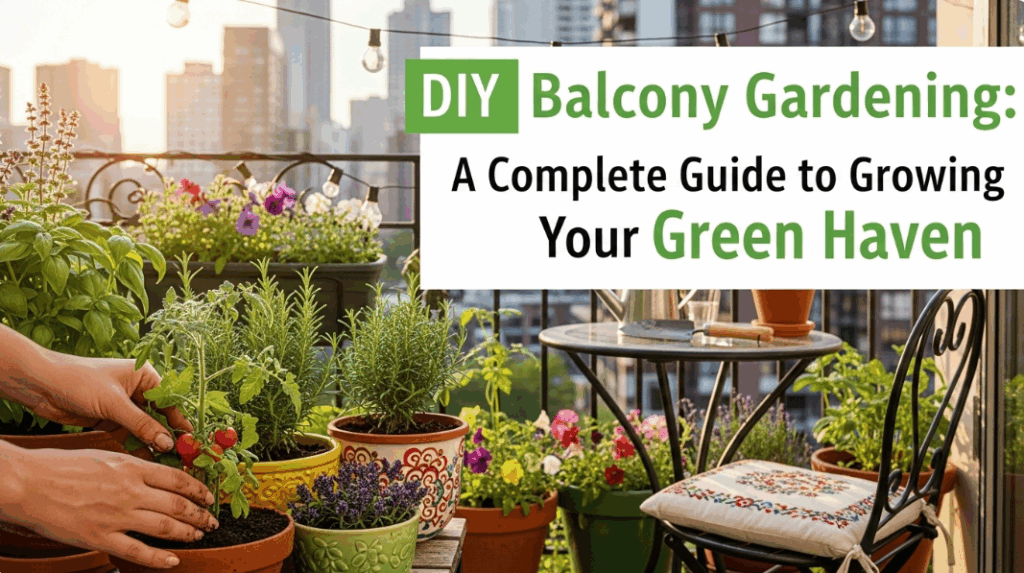
Introduction
City living may limit your access to a backyard, but it doesn’t mean you can’t enjoy gardening. In fact, DIY balcony gardening has become a booming trend in urban gardening ideas, offering a way to bring nature into high-rise life. Whether your balcony is small, shaded, or sun-drenched, this guide will help you turn it into a lush green sanctuary with flowers, herbs, and even edible plants.
Why DIY Balcony Gardening Is the Perfect Urban Hobby
Gardening is more than a pastime it’s therapeutic, sustainable, and surprisingly accessible in tight spaces. With proper planning, you can cultivate a balcony vegetable garden, grow your own herbs, or even enjoy flowering plants that add beauty and freshness to your apartment. DIY balcony gardening helps reduce stress, promotes eco-conscious living, and can even lower your grocery bill. For studies on gardening benefits, see Google Search on gardening benefits or Bing Search on gardening benefits.
From Mental Health to Fresh Meals
Many people turn to DIY balcony gardening for its calming effects. Tending to plants provides mindfulness and a sense of accomplishment. In addition, homegrown herbs like basil, mint, or oregano add fresh flavor to your meals, while lettuce and cherry tomatoes offer the basics of a healthy salad, all grown in your very own small space gardening setup.
Understanding Your Balcony’s Environment
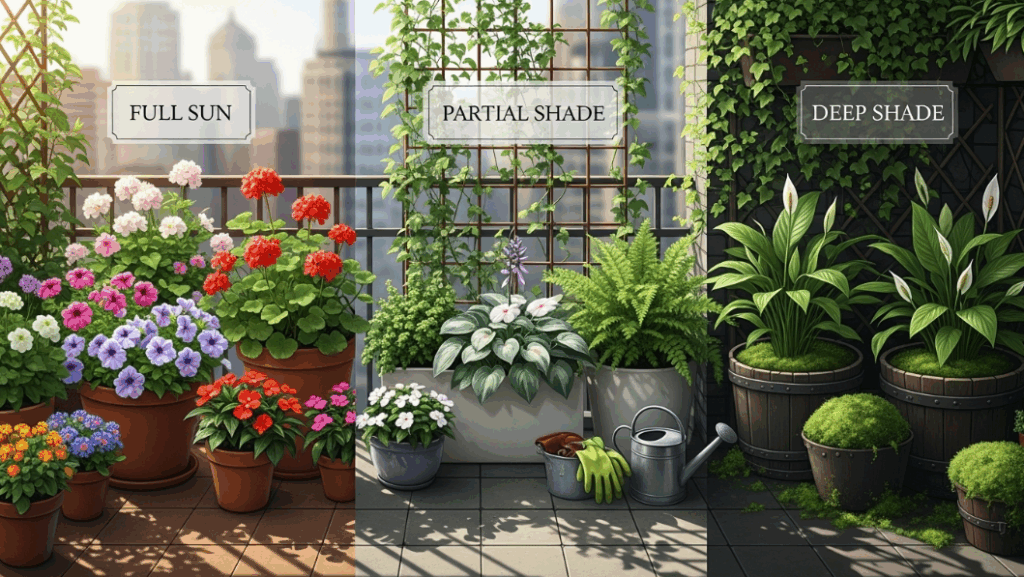



Each balcony is unique, and successful gardening depends on tailoring your approach. Observe how much sunlight your balcony receives throughout the day. South-facing balconies are ideal for full-sun plants, while east-facing ones are better for morning sun and partial-shade herbs. If your balcony is windy, install screens or plant wind-resistant species like lavender or rosemary.
Weather and Layout Considerations
DIY balcony gardening also requires awareness of rainfall, wind direction, and drainage. Make sure to arrange pots so that larger plants don’t block sun from smaller ones. Use vertical garden balcony structures like hanging shelves or trellises to optimize your space and light exposure.
Choosing the Right Plants for Your Space
In small balconies, plant choice matters. Opt for compact, productive species. Herbs like chives, coriander, and thyme work well in tight containers. Leafy greens such as kale or arugula grow quickly and don’t require deep soil. For flowering touches, marigolds, pansies, or petunias add vibrant color without taking up much room.
Edible vs. Ornamental Gardening
Some gardeners prefer the practicality of a balcony vegetable garden, while others seek the visual appeal of flowers. Fortunately, you don’t have to choose. Use container gardening techniques to blend edible and ornamental plants in beautiful arrangements. Just make sure your pots have adequate depth and drainage to support healthy roots.
Essential Tools and Container Gardening Techniques
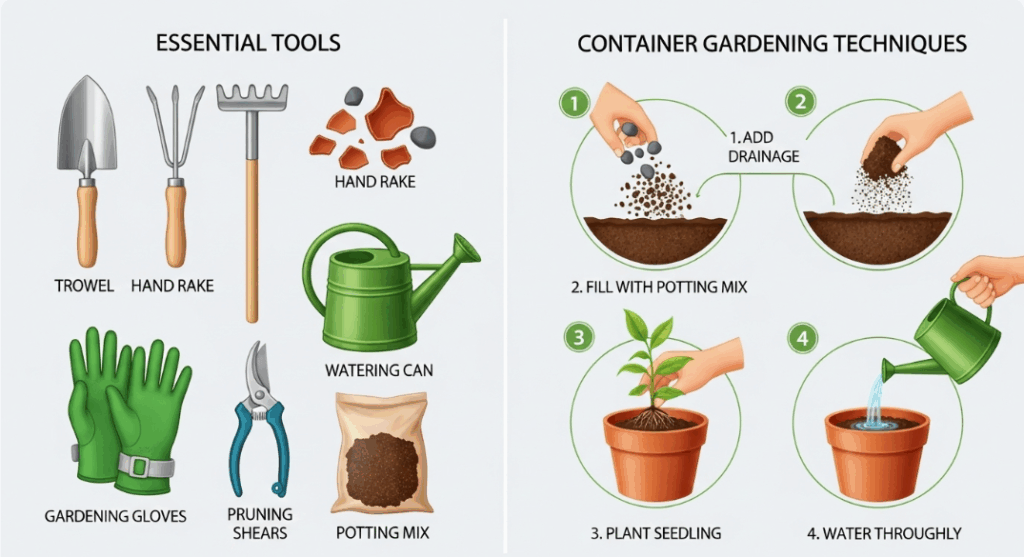
You don’t need a large toolkit just the basics: hand trowel, pruners, watering can, and gloves. Choose lightweight containers with proper drainage holes. Self-watering pots are great for busy individuals. Raised beds or fabric grow bags also work well in DIY balcony gardening projects.
Soil, Fertilizer, and Plant Nutrition
Use a potting mix specifically designed for container gardening. Avoid regular soil, which can compact and hinder root growth. Mix in compost, perlite, or coco coir for better structure. Fertilize every two weeks with organic options like seaweed extract or compost tea to keep your plants nourished and chemical-free.
Designing Your Dream Balcony Garden
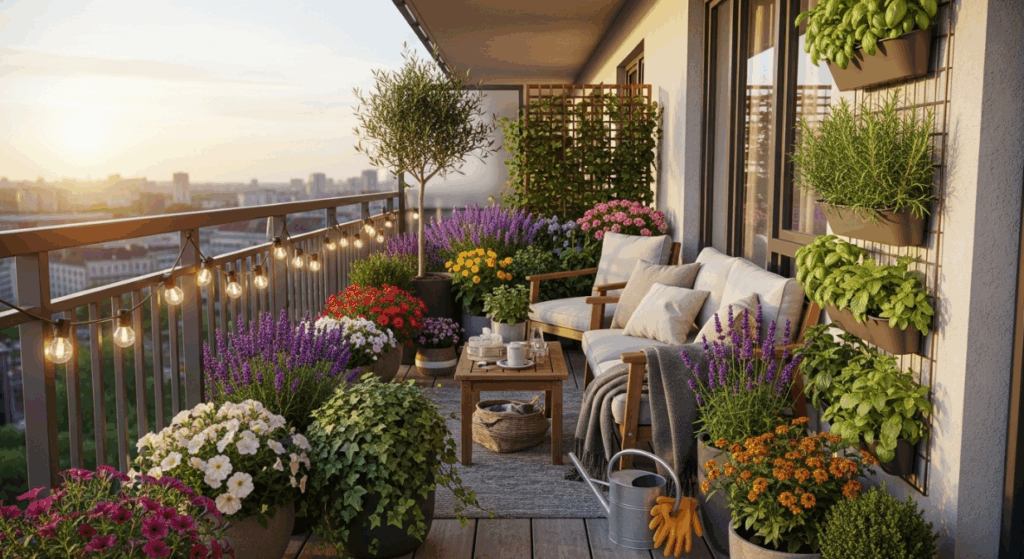



Functionality and style go hand in hand in balcony gardening. Group plants by sunlight needs, and create zones for example, an herb section near the kitchen door, or a floral corner for visual appeal. Make use of wall space, railing planters, and step ladders to build up instead of out.
Space-Saving Tricks for Small Balconies
Try using a vertical garden balcony setup or a trellis against the wall for climbing beans or ivy. Hanging planters free up floor space while adding dimension. Repurpose crates or shelves to build layered plant stands. Even balconies under 5 square meters can support 10–15 pots if arranged smartly.
Seasonal Care and Maintenance
Different seasons bring different needs. During summer, increase watering frequency and use mulch to retain moisture. In winter, move delicate plants indoors or wrap pots in insulating material. Always prune dead leaves and check for pests. Neem oil or natural soap sprays can treat most common issues organically.
Routine and Troubleshooting
Set a weekly care schedule: water in the mornings, inspect leaves, rotate containers for balanced sunlight, and clean dusty foliage. Yellow leaves may indicate overwatering or nutrient deficiency, while holes in leaves often point to pests. Address problems early to keep your garden thriving.
Harvesting and Enjoying Your Balcony Produce
The true reward of DIY balcony gardening is the joy of harvest. Snip herbs as needed to encourage more growth. Pick leafy greens when young for the best flavor. Share your homegrown harvest with neighbors or use it in homemade meals. Even a few pots can provide an abundance of fresh ingredients.
Conclusion
DIY balcony gardening offers a creative, therapeutic, and sustainable solution for modern urban living. It empowers you to grow food, reduce waste, beautify your home, and connect with nature all from a few square feet. Whether you’re planting a balcony vegetable garden, exploring container gardening techniques, or diving into vertical garden balcony designs, your space has infinite potential. Don’t wait start planting today and turn your balcony into a personal oasis.
| Aspect | Recommendation |
|---|---|
| Sunlight Exposure | South-facing balconies for full sun; east-facing for partial shade herbs |
| Plant Choices | Compact herbs, leafy greens, and small flowering plants |
| Space Optimization | Vertical gardens, hanging planters, trellises, layered stands |
| Tools | Hand trowel, pruners, watering can, gloves, lightweight pots with drainage |
| Maintenance | Regular watering, pruning, pest control with organic sprays, seasonal adjustments |
